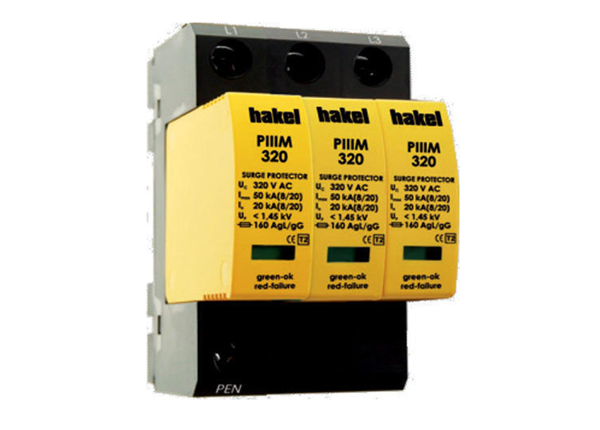
Surge Protection for VFD
Due to the action of the drive, the power quality of the electrical environment can be compromised. That is, the drives can create voltage surges and harmonics on the system.
There are various technologies available that aid in correcting these issues. This application note focuses on applying surge protective devices (SPDs) to a drive system to mitigate the damage that can occur due to voltage surges while considering the effects of the harmonics on the surge protective device.
Often the incoming voltage is 480 V, but other voltages may be used. The incoming power is usually stepped down to a lower voltage (typically 120 Vac) that provides power to the control circuit. The control circuit contains sensitive electronics.
Drive Input
Protecting the drive input is an essential step in protecting the drive system. Providing protection at this location prevents surge damage due to events propagated on the electrical system from upstream sources, external events such as lightning and switching surges created by the utility, and the interaction of multiple drives on the same system.
At this location, a parallel connected, voltage responsive circuitry device is appropriate (one without frequency responsive circuitry). Frequency responsive circuitry is not recommended for this location due to the fact that this location is typically more susceptible to impulse transients as opposed to ring wave transients.
Inverter Input
The inverter input is one of the most sensitive and critical areas of the drive itself. It is at this location that care must be taken and the proper survey conducted. You may install a parallel connected, frequency responsive circuitry device provided you have confirmation that within this drive that no additional capacitors have been installed to mitigate harmonic currents.
Control Circuit
The control circuit contains sensitive electronics that can be damaged by the environment created by the drive or by surges from external sources. Protection at this location is essential. Since this circuit is isolated by a step down transformer and it feeds sensitive electronics, a series connected SPD with frequency responsive circuitry is recommended for this location.
Drive Output
Protecting the immediate drive output is recommended when the length of the connection between the drive and the motor is longer than 50 ft (15 m) or if the connection is routed along an external wall or outdoors.
One reason for protecting at the immediate output when the length of the connection to the motor is long is due to reflected waves that can occur as the signal (often higher frequency) from the output of the drive reaches the motor and is then reflect back and forth between the drive and the motor. This action can create "voltage piling" – the reflected voltage adds to the nominal voltage and other reflected waves. The SPD will aid in reducing the voltage peaks of the reflected waves.
More importantly, if the connection between the drive and the motor extends outdoors, along a path that is exposed to the environment or close to the building’s steel structure, protection at this location is important to diminish the effects of direct lightning or induced voltage surges due to nearby lightning. These surges can cause damage to the drive, even if protection is provided at the motor input.
At this location, a parallel connected, voltage responsive circuitry device is appropriate (one without frequency responsive circuitry). Frequency responsive circuitry is not recommended for this location due to the high harmonic content of the signal due to the normal operation of the drive. Installation of frequency responsive circuitry devices at this location will lead to failure of the SPD. Utilizing a voltage responsive circuitry device at this location will eliminate this possibility.
